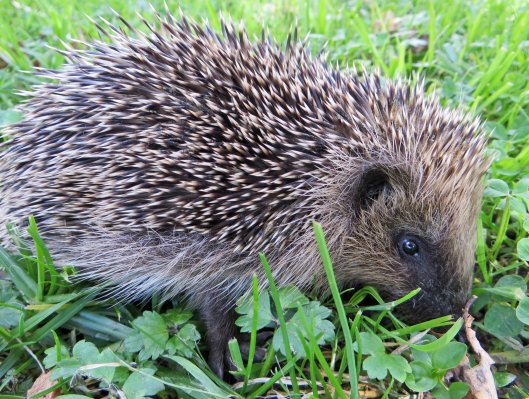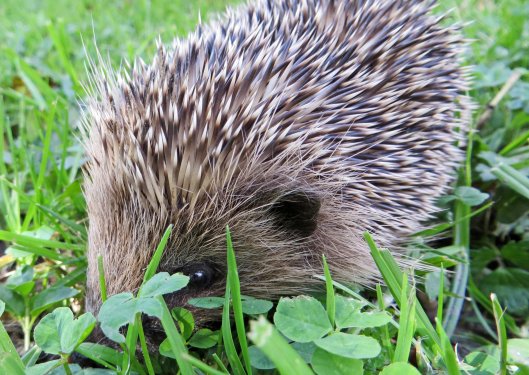My photos here are of a New Zealand hedgehog, though it is, in fact, the European species, Erinaceus europaeus, which British colonists introduced in the 1870s, partly to remind them of ‘home’ and partly to control garden pests like slugs and snails. As often happens when humans interfere with Nature, their introduction was not a wise move, as the hedgehog preys on some New Zealand native creatures and competes with them for food. It is considered a pest by many.

In Britain, their home, hedgehogs can be found almost everywhere, except in bogs and up mountains, and they are mostly certainly not pests. I’m sad to say I’ve never seen a hedgehog in Britain, neither in the six months I spent in Cheshire, nor since moving to Wales nine months ago. This may be an unfortunate side-effect of living in a first-floor flat with no garden access but it may also be because hedgehog numbers have declined rapidly in recent years, from an estimated 30 million in the 1950s to around 1.5 million in the 1990s.

Hedgehogs need our help. The British Hedgehog Preservation Society runs Hedgehog Awareness Week each year, to ‘highlight the problems hedgehogs face and how you can help them’. Check out their website for more information, and please help. After all, where would Britain be without its Mrs Tiggy-Winkles?


Perhaps NZ could set up a repatriation scheme for unwanted hedgehogs? Ironic that that we now need them back here!
LikeLiked by 1 person
It’s certainly a possibility for the future. NZ has plenty of rabbits they’d like to send back as well. 😉
LikeLiked by 1 person
We had a mother and young visit us a few years ago, several days running. We now have a ‘hedgehog house’ in our garden (a gift to us from a friend) but haven’t seen any hedgehogs since. I’d never set eyes on any before the visits of the small family, but then I used to live in London and I don’t suppose they’re seen much there unless there is much greenery.
LikeLiked by 1 person
At least you have a house for when they do come calling! 🙂
LikeLiked by 1 person
I sometimes think a hotel would be of more use to our various wildlife visitors! 🙂
LikeLiked by 1 person
It sounds like you’re already in the restaurant business! 😉
LikeLiked by 1 person
I haven’t seen a hedgehog for a few years now. I live on a smallholding and used to see them regularly in the evening but not these days. It is so sad.
LikeLiked by 1 person
That is sad. I thought it was perhaps just my living situation but obviously not.
LikeLiked by 1 person
Obviously, your garden-less first-floor apartment won’t be ideal for seeing hedgehogs, Annie. The closest most people get to seeing a live hedgehog now is, sadly, the road casualties (and even these are far fewer than years ago). You could always collect one of the splattered ones and take it home as a flat mate.
But don’t forget to log it with Project Splatter first. (For the avoidance of doubt, that bit is serious, the previous sentence wasn’t).
LikeLiked by 1 person
My various facebook friends have commented on how few they see these days – and they have gardens! 😉 It is very sad that these creatures have become less common.
LikeLike